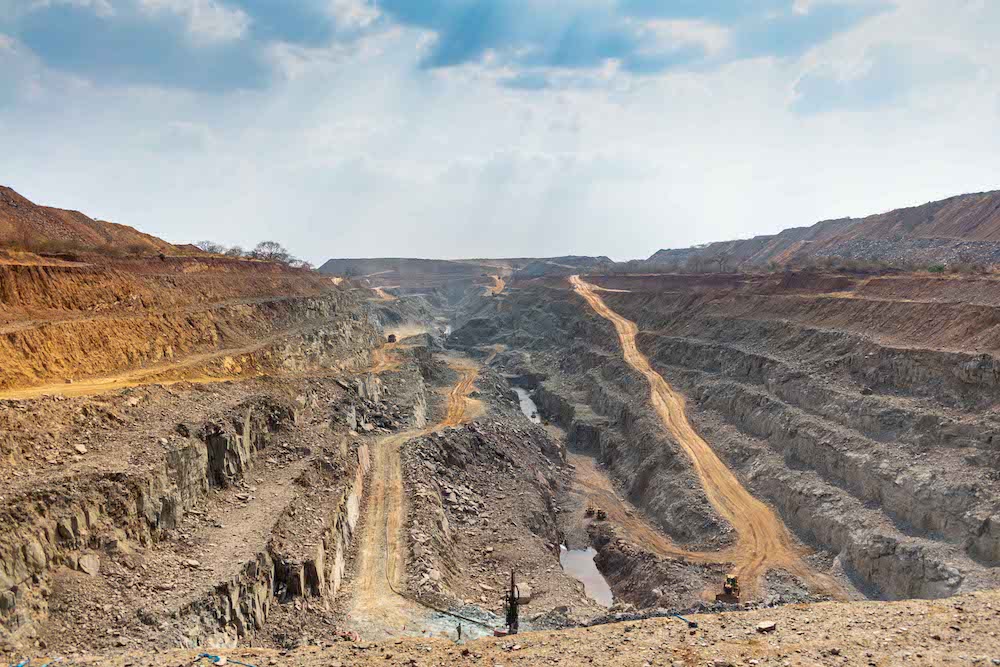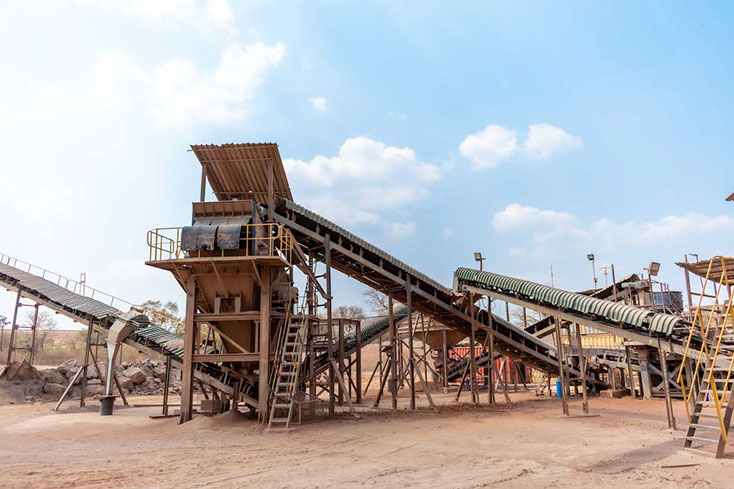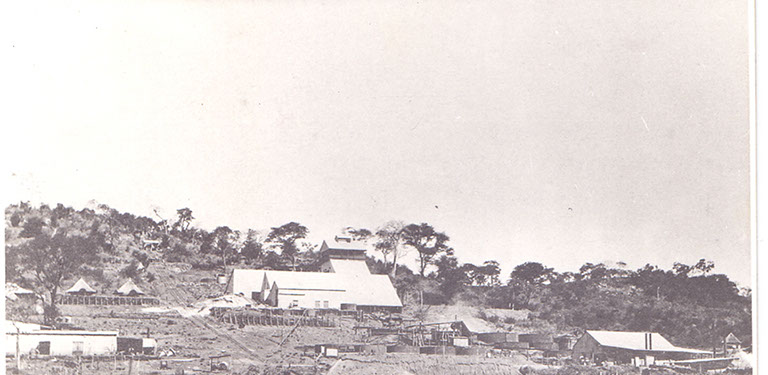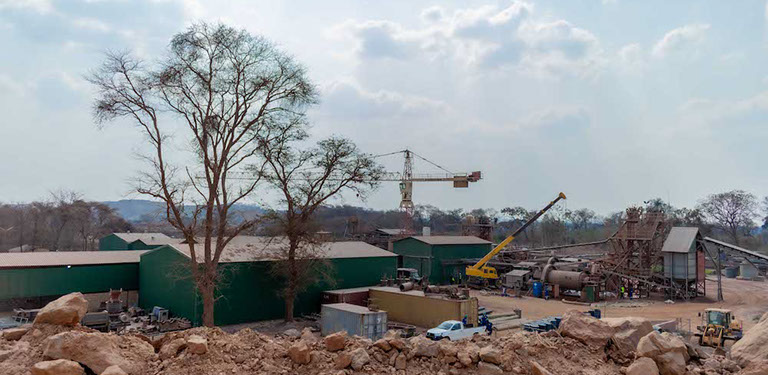120 km southwest of Harare and 20km south-southeast of the town of Chegutu at a latitude of 18° 17.5’ S, longitude 30° 13’ E and an altitude of around 1,200m.
Dallaglio invested in Pickstone Peerless Mine in 2014. As at 30 June 2020 the underlying claims had a total measured and indicated resource of 368,313 ounces (11,456 kg), and a total resource (including inferred) of (24,553 kg) 789,424 ounces.
Included within this resource were proven and probable in- pit reserves of 218,607 ounces (6,799 kg) and in-pit inferred resources of 19,173 ounces (596 kg). Open pit mine with a strip ratio of approximately 18:1, with ore processed through a plant on site with a maximum capacity of 33,000 t/month.
The ore body is not refractory in nature with an average recovery of approximately 85%. Full complement of supporting infrastructure including staff housing, office, stores, grid power, boreholes, and road infrastructure. Over 2015-2018 US$14 million was invested to develop the processing plant and subsequently upgrade its capacity. Since 2015, 2,984kg (95,938 ounces) of gold have been produced at the mine.
BEFORE & AFTER DALLAGLIO


Slide to the right for Pickstone Mine in 1918, to the left for Pickstone Peerless Mine in 2020.
Historic Production
The area has been worked, initially from scattered pits followed by two main periods of production from 1905 to 1919 and 1956 to 1972. Since that time various junior companies have conducted exploration and very small-scale production over the tenements but none have done sufficient work to provide a significant Resource, except Mutapa in 1998.
Early Mining
The Concession and Duchess Hill claims were first pegged in the latter part of the 19th century. Mining by European settlers began in 1905 but by 1919 most of the workings had been abandoned, including Pickstone and Peerless. In 1949 Lonhro amalgamated these claims and after a brief period of production, sold them to RTZ in 1960. The Pickstone mine remained in production until 1971.
Pickstone Mine
The original Pickstone Mine exploited lenticular quartz veins on the northwest flank of Duchess Hill. By 1912 two shafts to 23m established a 305-m strike over a 3.9m reef width. The mine closed in 1919 because of poor recoveries from the sulphide ores and for 30 years there was little activity until Lonrho took over the properties. Lonhro had positive results from five exploratory drillholes and exposed four main orebodies. This led to re-opening of the mine in 1956. RTZ increased throughput in 1964 and maintained this until closure in 1971.
The mine operated with a government subsidy for the last seven years of its life and virtually all of the reserves were depleted. Falling grades, a fixed gold price, sanctions and the security situation all played a part in the decision to close the mine.
Peerless Mine
The Peerless Mine was the most important of four original small-scale operations along the Peerless trend extending 1,600m from the western Newspaper Mine to beneath the Football Field Dump in the east. The trend is marked by a series of shallow pits and the larger Peerless Pit itself. RTZ opened two underground levels at Peerless and completed 19 core holes along 1,500m of the strike in 1960. Despite the positive drill results, trial mining and feasibility studies, RTZ never brought the Peerless sulphides into production. Between 1974 and 1976 RTZ revisited the Peerless Mine with a view to augmenting mill feed at the group’s Patchway operation some 50km away, but this plan was never implemented. The Newspaper deposit, situated at the western end of the Peerless Trend, is the third most important old mine in the area.
Masasa Mines Exploration 1987 – 1995
Masasa Mines (Pvt) Ltd, the Zimbabwean subsidiary of Delta Gold NL of Australia, secured an option to purchase the Pickstone-Peerless Property from RTZ in 1987. Their main objective was to establish a pittable oxide resource along the Peerless Trend. During their nine years of activity, Masasa also studied the potential for underground resources at both Peerless and Pickstone and engaged consultants to examine the amenability of tailings retreatment at the Big Red and Concentrate Dumps. They sampled old trenches along the Peerless and Concession-Duchess Hill Trends and mapped most of the project area at 1:5,000 scale. Masasa’s work culminated in a project review by an independent geologist in 1996 which, besides being critical of the calibre of the exploration work, recommended that Masasa retain the property based on the potential of the Peerless oxides and sulphides. Despite this, Masasa terminated its exploration.
Weston Mining (Pvt) Ltd 1993 – 1997
Masasa’s work culminated in a project review by an independent geologist in 1996 which, besides being critical of the calibre of the exploration work, recommended that Masasa retain the property based on the potential of the Peerless oxides and sulphides. Despite this, Masasa terminated its exploration. Weston Mining retreated portions of the old tailings dumps and commissioned metallurgical work on the Concentrate Dump by the Geomet Research Laboratory. Their report suggested that a cyanide leach on a washed product of a fine regrind could result in 60-70% gold recoveries.
North Rand NL
North Rand NL, an Australian company, arranged a takeover of the Masasa option in 1996 and also purchased Weston Mining’s tribute rights. North Rand geologically mapped the area and chip sampled various accessible sites across the mineralised zones. This work mirrored the problems of Masasa’s earlier sampling where the broad anomalous zones were successfully identified but with random, high individual assays. North Rand were unable to further their exploration following an unsuccessful attempt to list on the Australian Stock Exchange and IndoMin Ltd of Canada acquired the Masasa and Weston tributes from RTZ.
Mutapa Minerals Exploration 1997 – 1999
In 1997 IndoMin Ltd, a Canadian junior mining company, took over the North Rand agreement, exercised the option with RTZ and acquired the Pickstone-Peerless project area. IndoMin was renamed Battlefield Minerals Corporation, which wholly owned Mutapa Minerals (Pvt) Ltd, the Zimbabwean operating company.
Mutapa started exploration in November 1997 with the primary objective of establishing a near-surface Resource over the Peerless Trend. During this exploration, funding problems and failure of a dump retreatment operation led to bankruptcy and cession of the property to the African Banking Corporation (ABC).
PICKSTONE FAST FACTS
- 1888: The first claims, Concession Hill 319 & Concession 320 were granted to Charles Dunnell Rudd by Lobengula, the King of the Ndebele.
- 1913: Pickstone Gold Mines Limited was formed.
- 1907-1921: 105,681 tons @11.95g/t yielding 40,604 oz.
- 1949-1960: Lonrho PLC purchased & reopened the mine in 1956 (7,000tpm).
- 1960-1971: Rio Tinto. Pickstone shaft 750 meters deep & strike of 1.25km. 15,000tpm. Opened Peerless UG.
- 2,042,465t @7.20g/t yielding 472,805 oz (1905-1919 & 1956-1971).
- 1987-1995: Delta Gold NL of Australia, (Masasa Mines) exploration.
- 1997-1999: Mutapa Mines of Canada. Peerless Resource not mined.
- 2000-2004: The African Banking Corporation.
- 2004-2014: African Consolidated Resources (ACR >>VAST). Exploration.
- 2014: The JV company, (Breckridge Investments 100%), commenced Pickstone- Peerless gold mine production 3Q-2015.
Head Office:
1 Tyward Close, Ballantyne Park, Harare, Zimbabwe
Registered Office:
121 Borrowdale Road, Gunhill, Harare, Zimbabwe
Breckridge Investments (Pvt) Limited
+263 785 694 941

© 2021 Dallaglio by One August - All Rights Reserved
Delta Gold (Pvt) Limited
+263 785 692 940
Email: info@dallaglio.co.zw





























